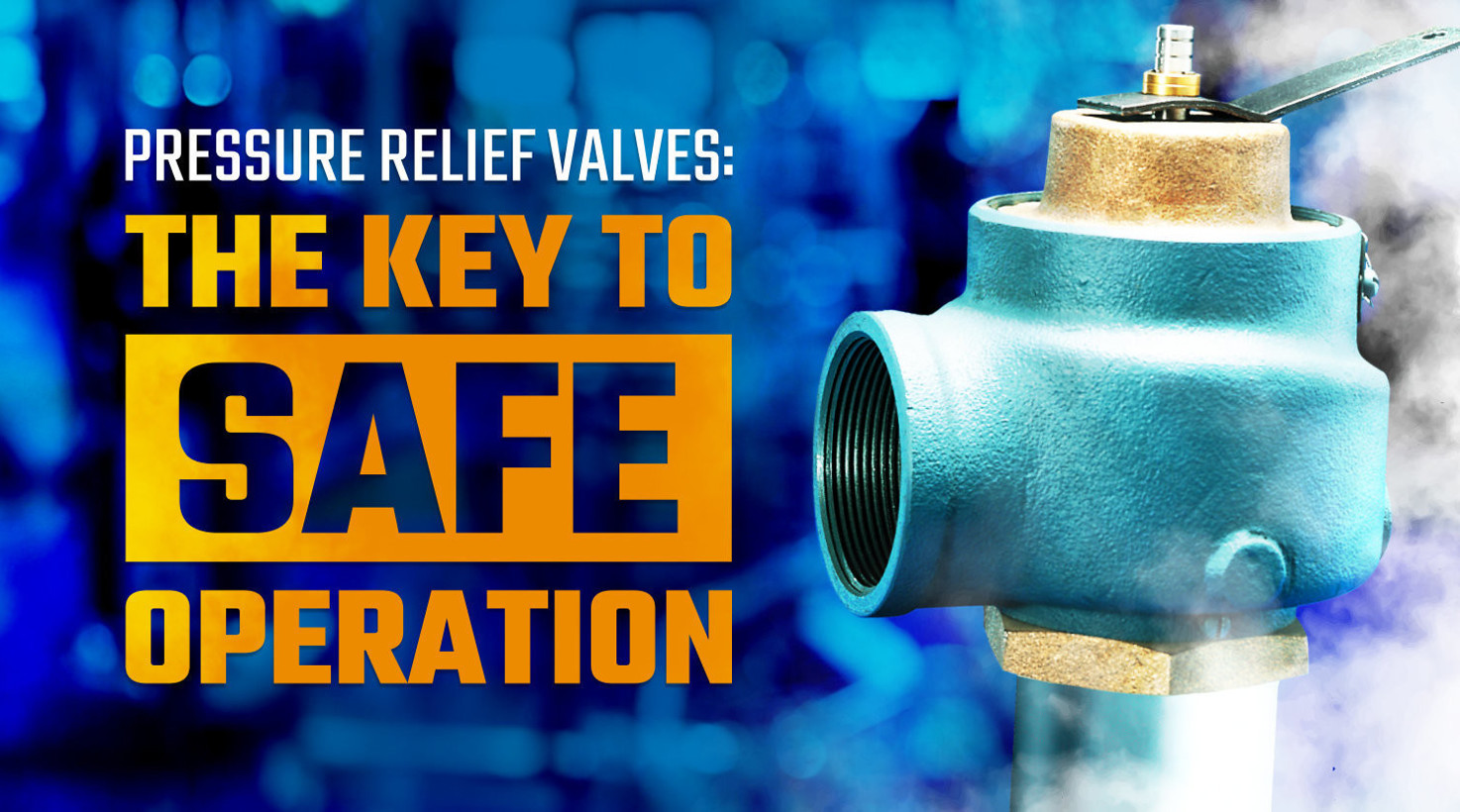Two things that go hand-in-hand with boilers… heat and pressure. The higher the pressure, the higher the temperature. By keeping a boiler under pressure, you’re able to raise the temperature to what you might need at a process, and higher pressure also allows you to send a lot more steam down a pipe than at a lower pressure. Either way, pressure must be carefully monitored and kept within allowable limits for safe operation.
WATCH IT
Every boiler is rated for a specific pressure by its manufacturer. If it’s kept in its ideal pressure range, it will produce steam efficiently, and keep your work processes properly supplied. If the pressure inside the pressure vessel gets too high, though, that could translate to disaster. Modern boilers may have simple switches and gauges, or a sophisticated pressure monitoring system that let boiler operators know the pressure at any given moment. However, as a safety precaution, every boiler also has a pressure relief valve installed to keep the pressure vessel protected if anything malfunctions.
BLOW OFF SOME STEAM
Pressure relief valves are remarkably simple in their design. Most are designed with a disk that is situated upon a seat and held there by a powerful spring. The tension on that spring is adjusted so that it is holding the disk in place with the same amount of pressure to which the valve is rated. Once the pressure reaches an unsafe level, the spring can no longer hold the disk firmly in the seat, the disk gets pushed upwards, and the valve opens. Once enough pressure has been released, there won’t be enough pressure left to counteract the force of the spring, so the disk will drop back into place in the seat and stop the flow of steam being vented.
That lack of sophistication is actually the beautiful thing about pressure relief valves. Because they have so few moving parts, and use something as simple as spring tension to keep them closed, they tend to be extremely reliable. That’s exactly what you want in a failsafe valve.
KEEP IT SAFE
While pressure relief valves aren’t that terribly complex, they do require a few things to keep them operating properly as your boiler’s safety net. First, they need to be properly drained. If a pressure relief valve doesn’t have a drain line installed, the outlet can fill up with water over time. That water can cause scale and corrosion to build up around the valve’s inner assembly, causing it to get stuck in place. A stuck pressure relief valve is a dangerous thing indeed, because if it can’t open, it can’t do its job.
A safe pressure relief valve also has to have proper vent lines installed. If you think about it, when that valve has to do its job, it’s going to need to vent steam. That steam can’t just come blasting out of the valve onto whomever or whatever happens to be nearby. It needs to be routed to a safe area of discharge. On a steam boiler, that generally means OUTSIDE the building. One pound of steam takes up a cubic yard at atmospheric pressure, so it’s going to need some space. It is also critical that the valve not be the support for discharge piping; this can lead to premature failure of the valve.
The other thing a pressure relief valve needs is regular inspection. Because it is so crucial to safe operation, pressure relief valves need to be checked by a professional on a regular basis to make sure they are able to do their job, which could save your boiler someday. They should not leak, and should be free from buildup or damage of any kind. It’s also smart to keep a spare on hand for easy replacement. Bear in mind, there is no guarantee a relief valve will reseat consistently if it is lifted manually or opens due to an overpressure event.
AT LEAST ONE
It’s important to make sure your boiler has the correct number of pressure relief valves in place. ASME code dictates that every boiler must have at least one pressure relief valve, but boilers that produce higher volumes of steam may need to have multiple valves in place to keep the pressure vessel safe. Having multiple pressure relief valves also adds another degree of safety, because on the extremely rare occasion that one valve fails, the second valve will do the job of venting excess pressure to some extent.
If you’re in the market for a pressure relief valve, WARE has a wide selection available on our online Boiler Warehouse site. We also have the trained technicians to install them, or to perform any other kinds of service or maintenance you require. If you’d like to learn more about the valves in your boiler, consider taking an online or in-person class at WARE’s Boiler University. Whatever you need, we’re here to help. Just let us know.
